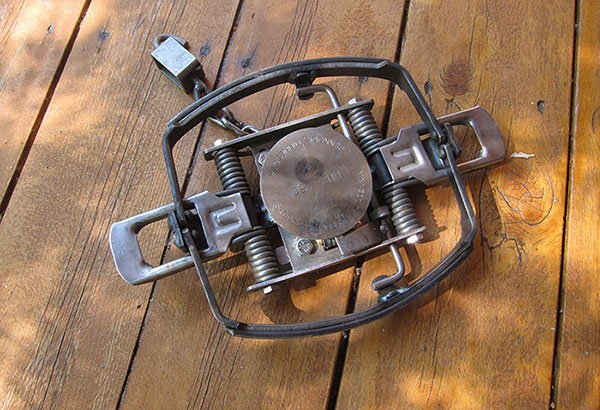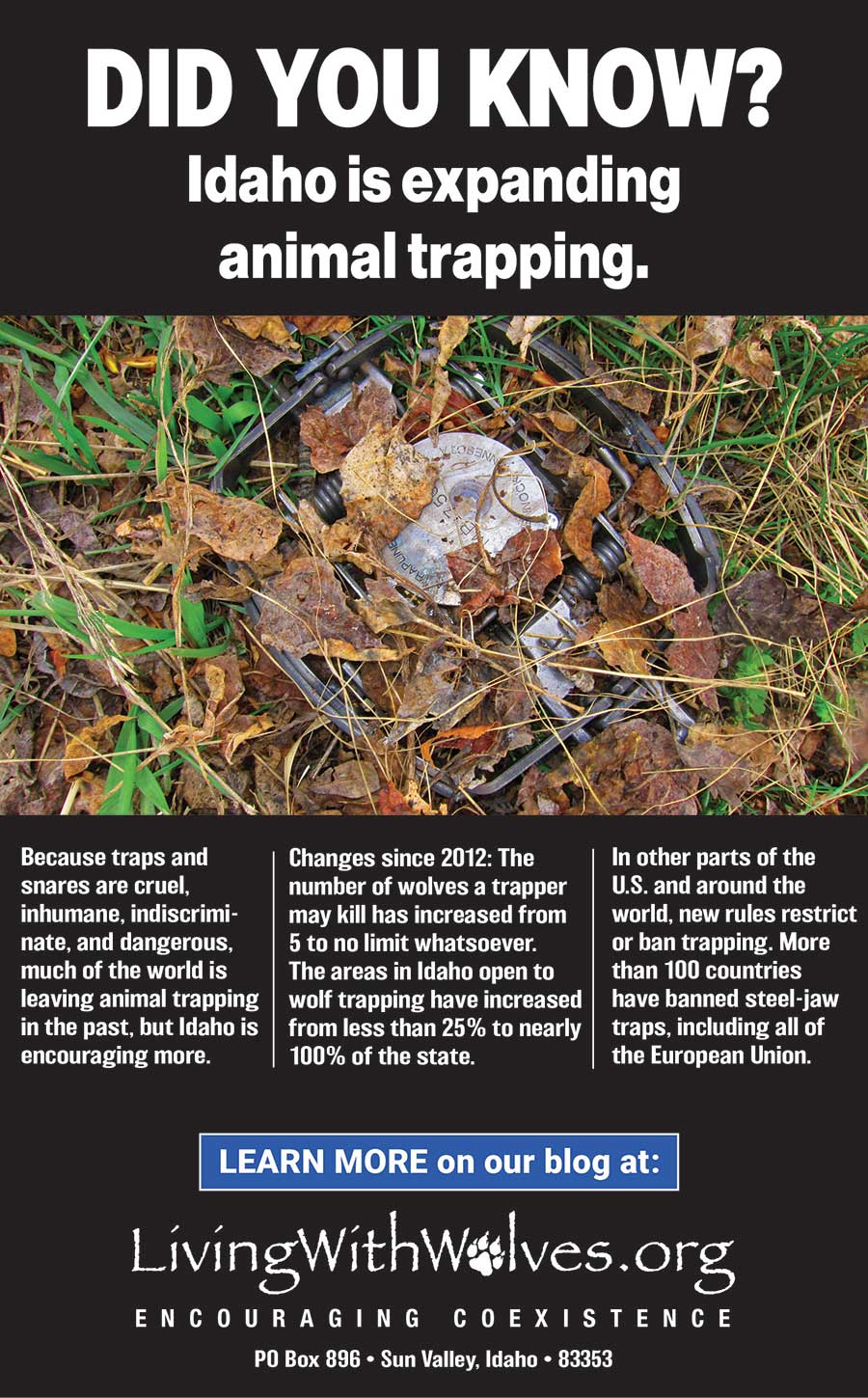Trapping Trends
Trapping animals is still common practice in many parts of the world. Although the demand for products made from animal fur has decreased in Europe and America, there is still a market for fur elsewhere in the world, particularly in Russia and China. Millions of animals, referred to as “furbearers,” are trapped every year to strip them of their coats. Some traps are designed to kill the animal, while others are intended to restrain the animal until the trapper returns to kill it. Trappers often argue that their traps are humane. But, make no mistake, there is nothing humane about trapping animals.
Trends in the Right Direction
It is encouraging that much of the world has limited or even banned trapping. California became the first state in the U.S. to do so. California already had some of the strictest trapping regulations in the country after a 1998 ballot banned the use of body gripping traps. Then, just last year, the Wildlife Protection Act of 2019 banned all recreational and commercial fur trapping in California, stopped the sale of furs taken through means other than trapping, and eliminated the state’s fur dealer and fur agent licenses.
With its rich diversity of flora and fauna, Costa Rica is a mecca for ecotourism. This is due in no small part to that country’s decision in the 1980s to focus on and invest in wildlife and nature conservation. Reversing deforestation became a top priority and in just 18 years, forest cover increased from 21% to 50% of the country by 2005. National parks and other protected areas make up approximately a quarter of the country, providing ample ecotourism opportunity for one of Costa Rica’s most lucrative and fastest growing economic sectors, and certainly one of its most sustainable. In 2017, Costa Rica adopted even more comprehensive wildlife regulations, consisting of 231 articles, that support an overarching theme they express in Latin, in dubio pro natura, meaning essentially when in doubt, favor nature. With a mindset and national policy that favors the non-consumptive use of nature, it is no surprise that leg-hold traps, strangling snares and poison have been banned there for decades.
Spring-powered, steel jaw traps (also referred to as leg-hold traps), are banned in more than 100 countries. While many European countries had already banned leg-hold traps, in 1995, they were banned in all member nations of the European Union. In some cases, even importing fur from countries that use leg-hold traps is prohibited. In the U.S. in 1994, Arizonans voted to ban leg-hold traps on public lands. Voters in Colorado and Massachusetts chose to ban the use of leg-hold and body gripping traps as well as snares in 1996. In 2012, the use of traps and snares was banned in Switzerland (not an EU member nation). Only seven states in the U.S. have banned the use of leg-hold traps: California, Colorado, Florida, Massachusetts, New Jersey, Rhode Island, and Washington. These changes reflect the growing trend around the world to move away from trapping.
Only five European countries permit the use of snares (Britain, the Republic of Ireland, France, Spain and Belgium.) Snares are essentially hair-trigger wire lassos set at neck height. They tighten as the animal struggles, reducing blood flow to the brain. Snares can be designed to kill or restrain, but even those intended to restrain an animal often cause debilitating and infection-prone wounds, digging into the animal’s flesh as they struggle to free themselves. In the U.S., according to 2017 data, the use of snares is permitted in all but 14 states.
Many countries have recently chosen to ban leg-hold traps or all animal trapping. To list just a few of those: Peru (2015), Jordan (2015), Iraq (2010), Chad (2008), Japan (2007), Guatemala (2004), and Turkey (2003). In addition to banning their use, manufacturing powerhouse Taiwan banned the production, sale, import and export of traps in 2011. The list of countries and states choosing to limit or eliminate trapping in favor of protecting wildlife continues to grow. Even Sudan, China, Somalia, Mozambique and Mexico have long since outlawed leg-hold traps or all animal trapping.

The Idaho Contrast
The state of Idaho stands out in stark contrast to the global movement away from trapping animals. While Colorado amended its state constitution in 1996 to ban trapping, Idaho did the opposite. In 2012, perhaps sensing the turning tide of public opinion, Idaho legislators amended the state constitution to protect trapping as an unalienable right. And going even further, Idaho continues to extend trapping seasons as well as the geographic areas within which trapping is allowed.
A variety of animals are trapped for their fur, but wolves in Idaho have been targeted far beyond the time of year during which their fur is the most valuable, simply because certain factions want to see wolf numbers reduced. Since 2012, the annual limit for wolf trapping has increased from 5 wolves to 30 currently. In other words, one individual may trap 30 wolves during a given season. In 2012, wolf trapping was limited to about 25% of the state, but now nearly 100% of Idaho is open to wolf trapping.
In 2019, a proposal to allow trappers to use traps and snares to target wolves in the Big Wood River and Little Wood River Valleys was successfully blocked. That success is thanks to all of the people who rallied to oppose the measure. As a result, the two hunting units that encompass the Big and Little Wood River Valleys are the only two in all of Idaho’s 99 geographically determined hunting units where wolf trapping is prohibited. This was a significant accomplishment, but the withdrawal of the proposal does not mean that it is gone for good. It could be re-introduced in the future.
In 2020, the Idaho Department of Fish and Game expanded trapping opportunities onto public land in areas where trapping was previously restricted to private land. The rule changes also allow for the use of snares in more parts of Idaho, dramatically increasing the geographic scope of trapping and snaring statewide, while also extending the duration of these seasons. These recent changes were created with detailed input from Idaho trapping organizations. Special interest groups representing “big agriculture” have also been backing these proposals.
Although trapping is regulated at the state level in the U.S., enforcement of regulations is not robust. Trapping and snaring are inhumane and indiscriminate practices. Many non-target animals, including pets, are often caught by these traps as well. States should be reducing, not expanding, trapping opportunities. Best of all would be an elimination of the practice altogether.




